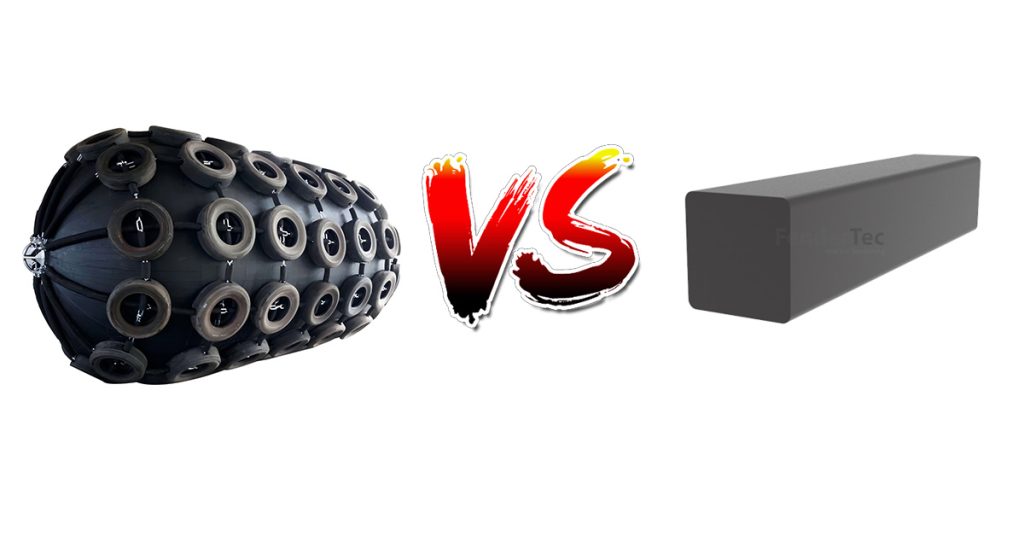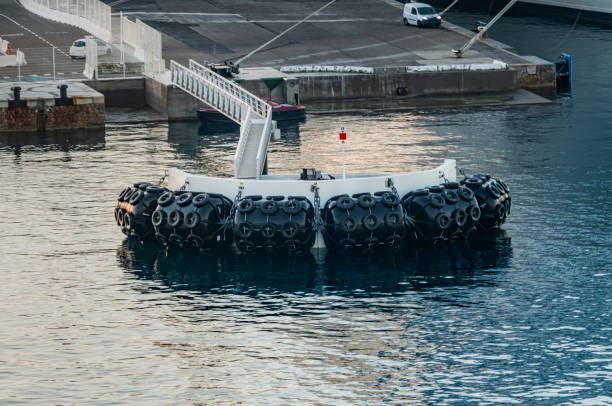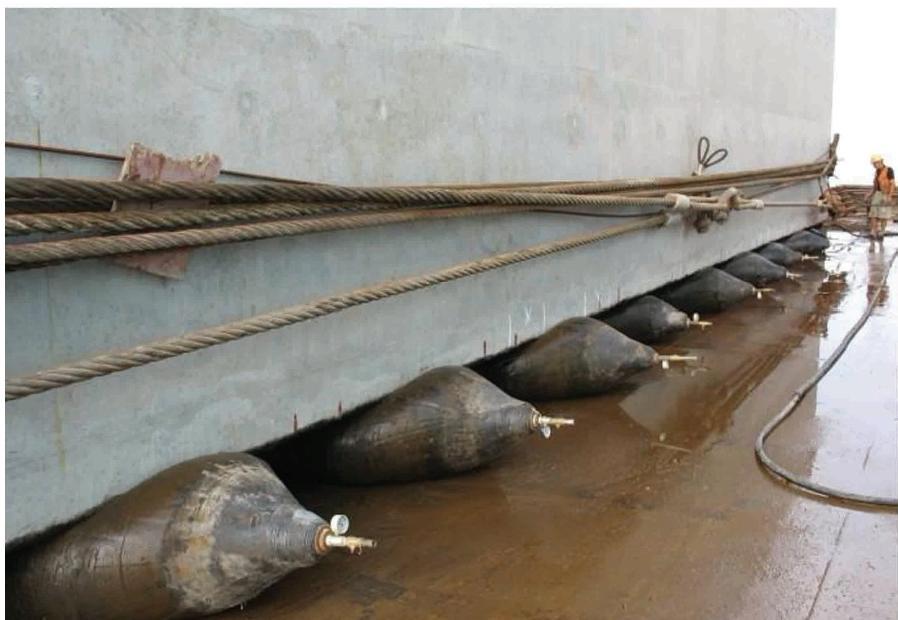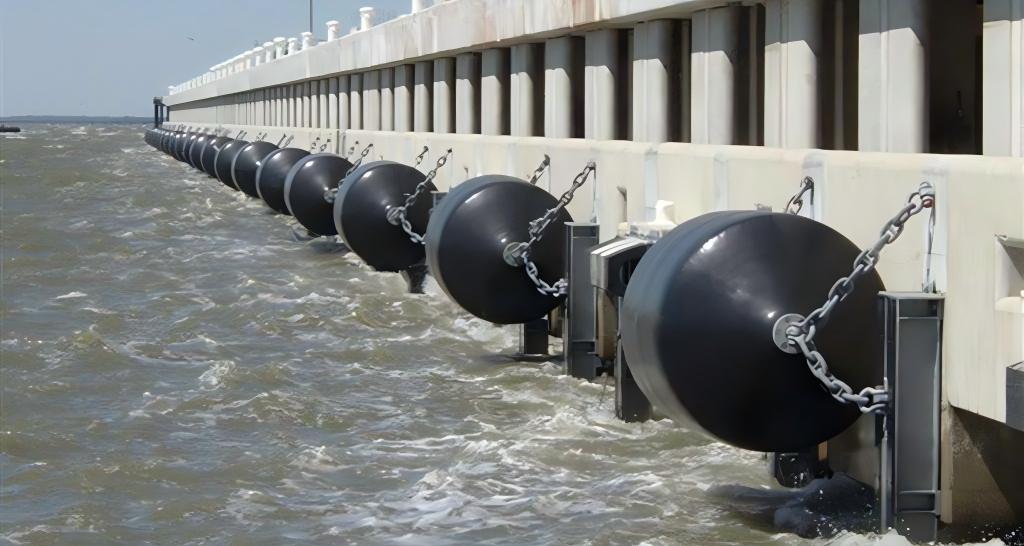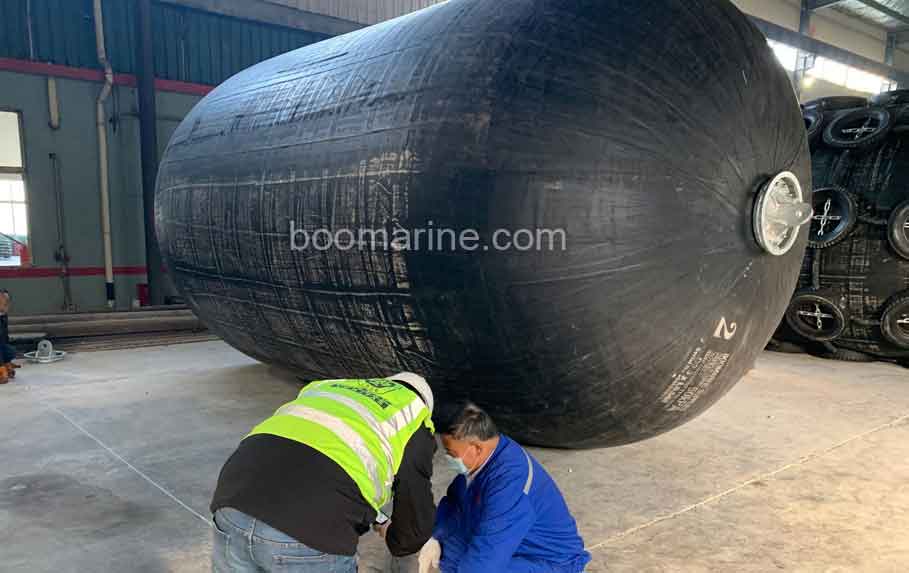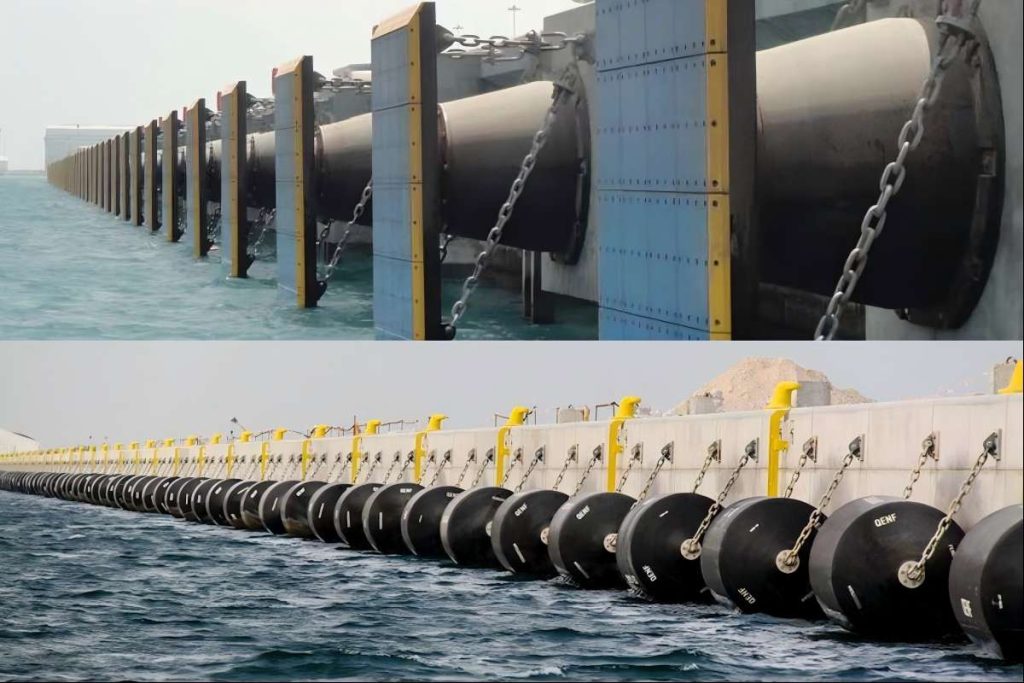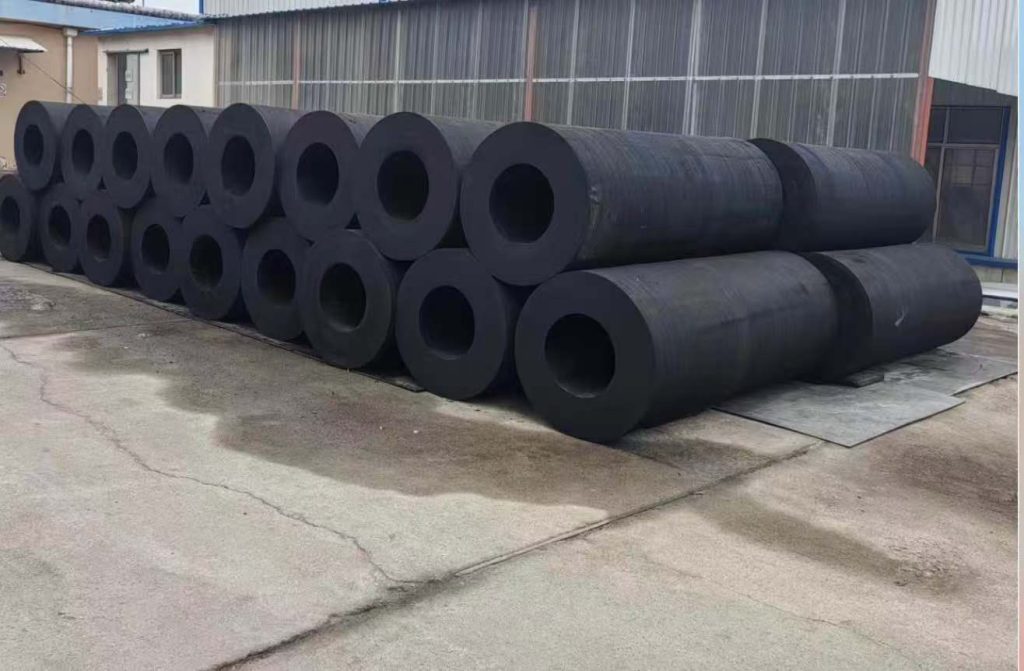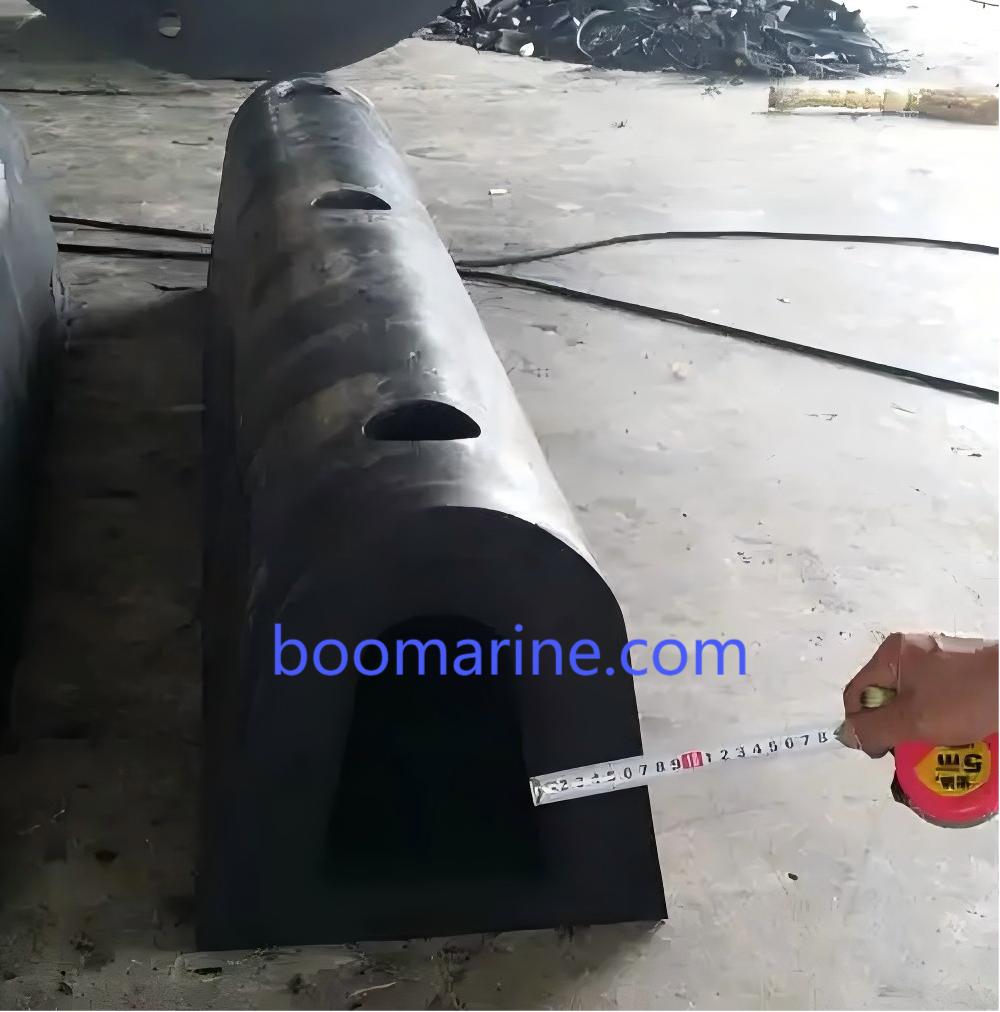Boating equipment can be confusing, especially with terms that seem interchangeable, such as “boat bumpers” and “boat fenders“. Although often used synonymously, boat bumpers and boat fenders serve distinct purposes in protecting vessels from damage during docking or mooring.
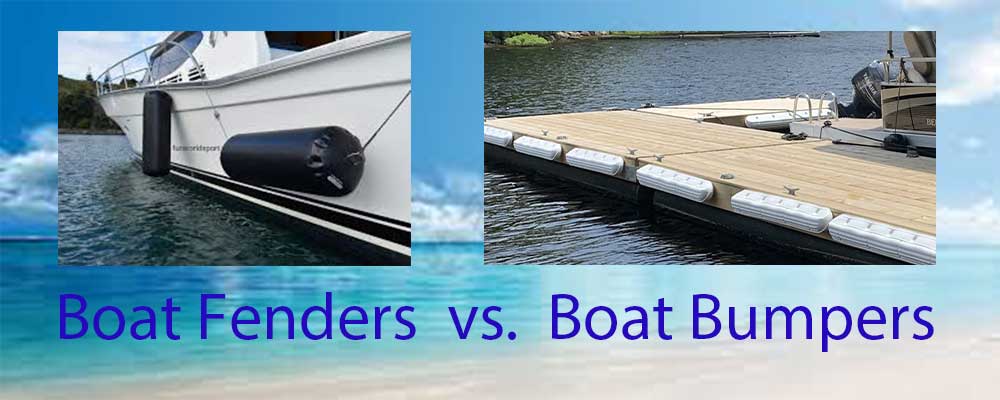
What are boat bumpers?
Boat bumpers are protective devices typically installed on docks, piers, or pilings to prevent damage to boats when they come into contact with these structures during docking or mooring. Unlike boat fenders, which are portable and attached to the boat, bumpers are fixed in place as a permanent solution. They are made of durable, shock-absorbing materials such as rubber or foam and provide continuous protection, especially in areas where boats frequently dock. Boat bumpers help reduce the wear and tear on both the boat and the dock, ensuring safer and smoother docking operations.
Typical Types of Bumpers:
- Dock bumpers: Padded or cushioned materials mounted directly on docks to prevent boat hull damage.
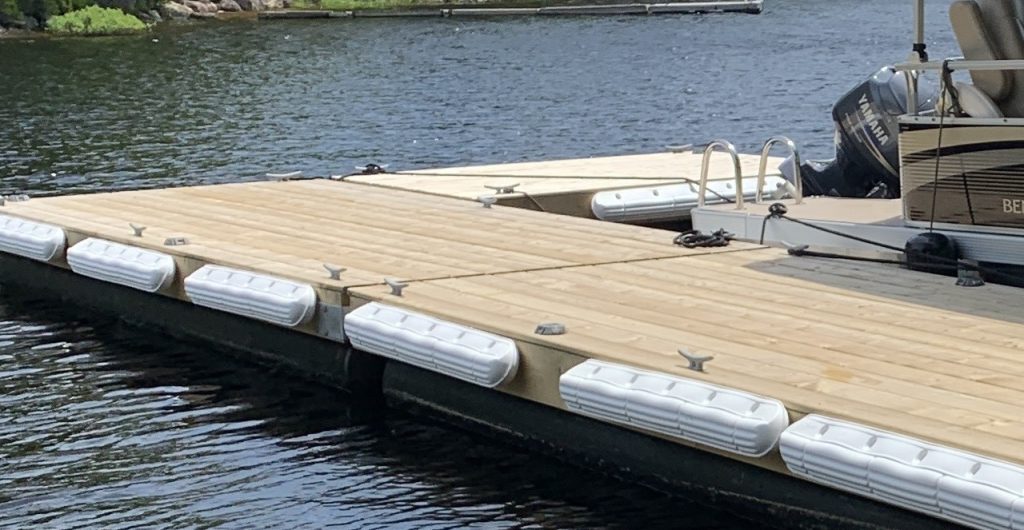
- Fixed rubber or foam bumpers: Often found in marinas, they provide additional cushioning where boats repeatedly dock.
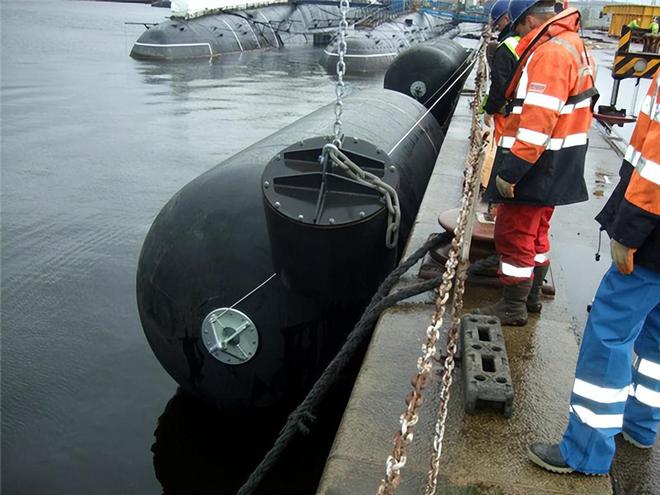
What are boat fenders?
Boat fenders are protective devices used to prevent damage to a boat’s hull when it comes into contact with docks, pilings, or other vessels. They act as a cushion, absorbing the impact and preventing scratches, dents, or other types of damage caused by collisions during docking or mooring. Fenders are typically made from durable, flexible materials like rubber, foam, or inflatable vinyl, and they come in various shapes and sizes to suit different types of boats and docking conditions. By hanging or positioning the fenders between the boat and potential hazards, boaters can protect their vessel from harm during everyday docking activities.
Typical Types of Fenders:
- Cylindrical fenders: Can be deployed horizontally or vertically depending on the docking arrangement.
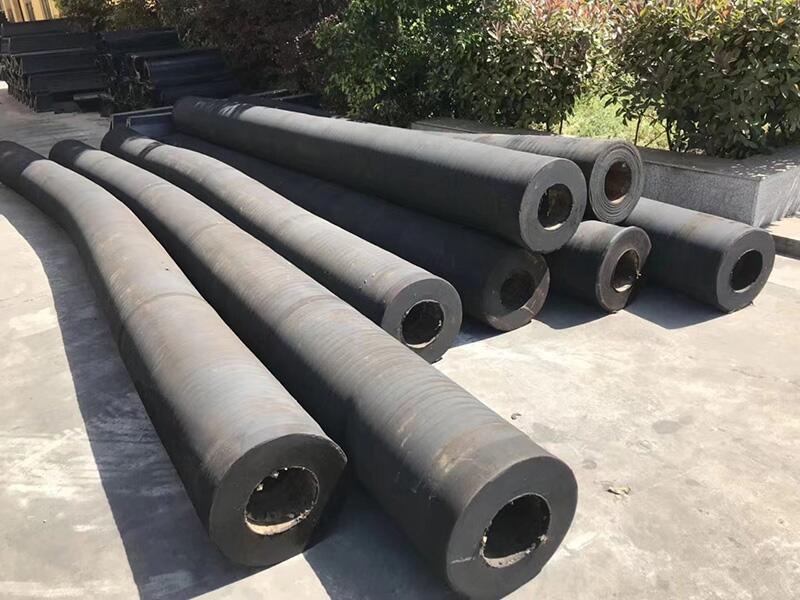
- Round fenders: Often used for larger vessels, providing greater surface area for impact absorption.
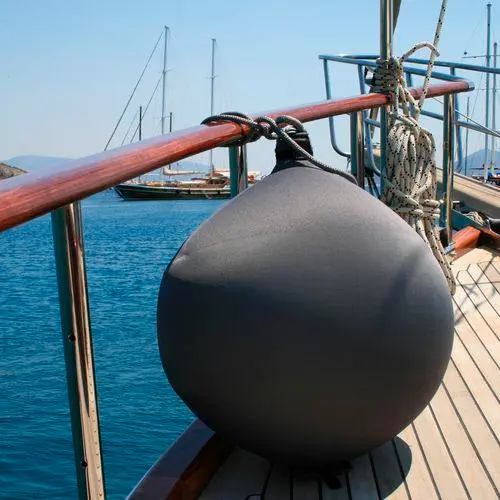
- Specialty fenders: Includes corner fenders for dock edges or step fenders for special configurations.
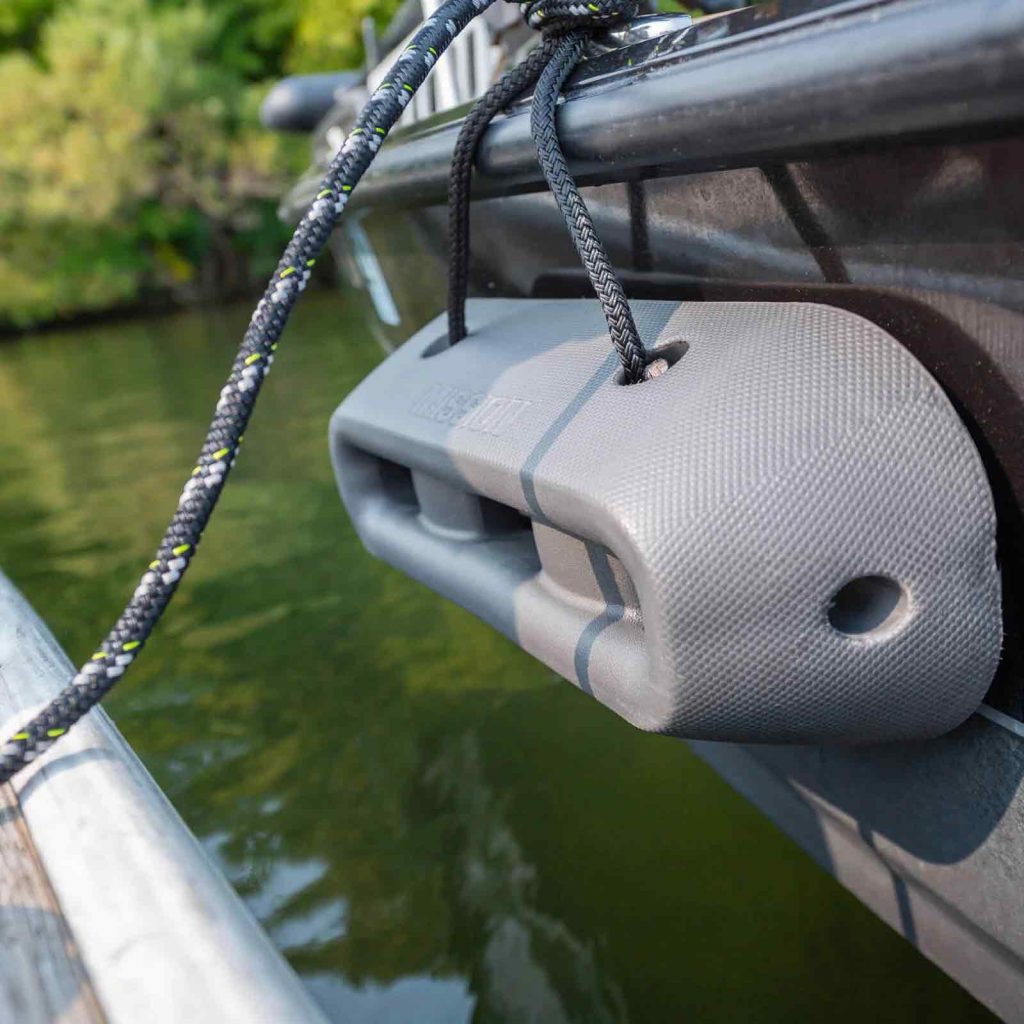
Key Differences Between Boat Fenders and Boat Bumpers
| Aspect | Boat Fenders | Boat Bumpers |
| Mobility | Portable, attached directly to the boat. | Stationary, attached to docks or piers. |
| Purpose and Use | Used by boaters for temporary protection during docking. | Provide continuous protection at frequently used docks or slips. |
| Installation | Deployed by the boat owner, movable and adjustable. | Permanently installed on docks, used by multiple boats. |
| Appearance and Shape | Typically inflatable, flexible, made from rubber or vinyl; comes in cylindrical or round shapes. | Usually rigid, thicker, made from foam or rubber; more robust and durable. |
When to Use Boat Fenders vs. Boat Bumpers?
Use Cases for Fenders:
- Temporary Docking or Mooring: Boat fenders are essential in situations where boats are temporarily docking or mooring. Since fenders are portable, they can be quickly deployed and adjusted to fit the specific docking environment. They are particularly useful when docking at unfamiliar locations where the dock infrastructure may not have built-in protective measures.
- Suitability for All Boat Types: Fenders are versatile and can be used with virtually any type of boat, from small personal watercraft to large yachts. They come in various sizes and shapes, allowing boaters to select the right type of fender for their vessel’s specific needs. In marinas where docking space may be tight or docking protection is limited, fenders play a crucial role in preventing damage to the boat’s hull.
- Short-Term Protection: Fenders are designed for temporary protection and are often deployed by the boat owner only when needed. They act as buffers between the boat and any nearby structure, absorbing impact and reducing the risk of scratches, dents, or hull damage. Once the boat is safely away from the dock, the fenders can be removed and stowed for future use.
Use Cases for Bumpers:
- High-Traffic Marinas and Personal Docks: Boat bumpers are the ideal solution for permanent protection in high-traffic areas where boats frequently dock. Marinas, personal docks, or busy piers benefit from the continuous protection that bumpers provide. Since bumpers are installed directly onto the dock or pier, they remain in place to protect boats from repeated contact with hard surfaces. This is especially beneficial in marinas that experience heavy boat traffic or rough water conditions, where vessels are at greater risk of impact.
- Additional Layer of Protection: Boat bumpers complement other protective measures, such as fenders, by serving as a fixed layer of defense. Even in areas where boaters may use fenders for temporary protection, bumpers add an extra safeguard for times when fenders may be insufficient or not in use. Since bumpers are made from durable materials, such as rubber or foam, they are built to withstand repeated impacts and offer long-lasting protection to both boats and the dock infrastructure.
- Fixed and Durable Solution: Once installed, bumpers require minimal maintenance and provide a continuous, reliable solution for boat owners. They are commonly found in docks that service multiple boats, offering a shared resource that protects all vessels docking in that area. This makes them a cost-effective and practical choice for dock managers or marina owners.
Combining Fenders and Bumpers:
- Maximum Protection in Rough Waters: In situations where boats are exposed to rough waters, unpredictable weather conditions, or strong currents, combining both fenders and bumpers provides maximum protection. The fenders can be adjusted to cushion the boat from impact with any nearby structure or vessel, while the bumpers provide a reliable, fixed barrier on the dock or pier. This dual protection is especially important for larger boats or vessels that are more vulnerable to collision damage in turbulent waters.
- Busy Docking Areas: In crowded marinas or harbors, where boats are often docked close to one another, using both fenders and bumpers is a smart way to ensure that boats are protected from multiple points of contact. Fenders protect the sides of the boat from adjacent vessels, while dock bumpers protect the boat’s hull from the dock itself. This combination reduces the risk of damage, especially when boats are repeatedly docking and undocking throughout the day.
- Enhanced Safety for Long-Term Docking: For boats that are left moored or docked for an extended period of time, such as overnight or during a storm, using both fenders and bumpers can help ensure the boat remains undamaged during its time at the dock. The fenders can be adjusted to absorb any unexpected movement or impact, while the bumpers provide ongoing protection as the boat stays in place. This is particularly useful in preventing wear and tear on both the boat and the dock over time.
While boat bumpers and boat fenders serve a similar protective function, they differ in design, purpose, and application. Understanding these differences helps boaters choose the appropriate equipment for various docking and mooring needs.
By understanding the specific situations where fenders or bumpers are most effective, boaters and dock owners can make informed decisions on the right combination of protective equipment for their needs.

